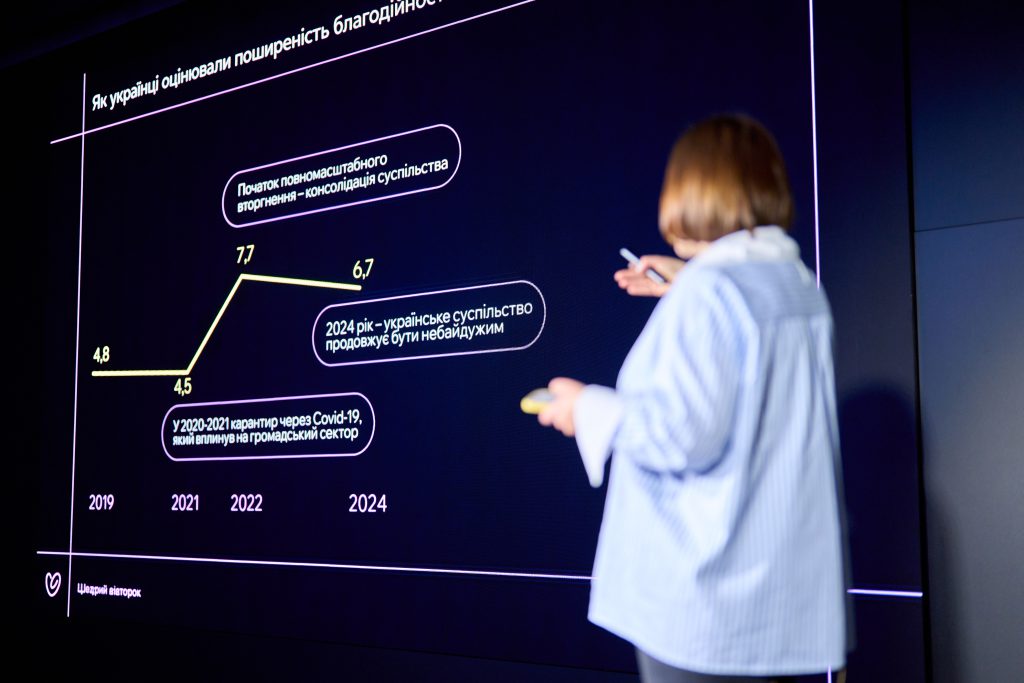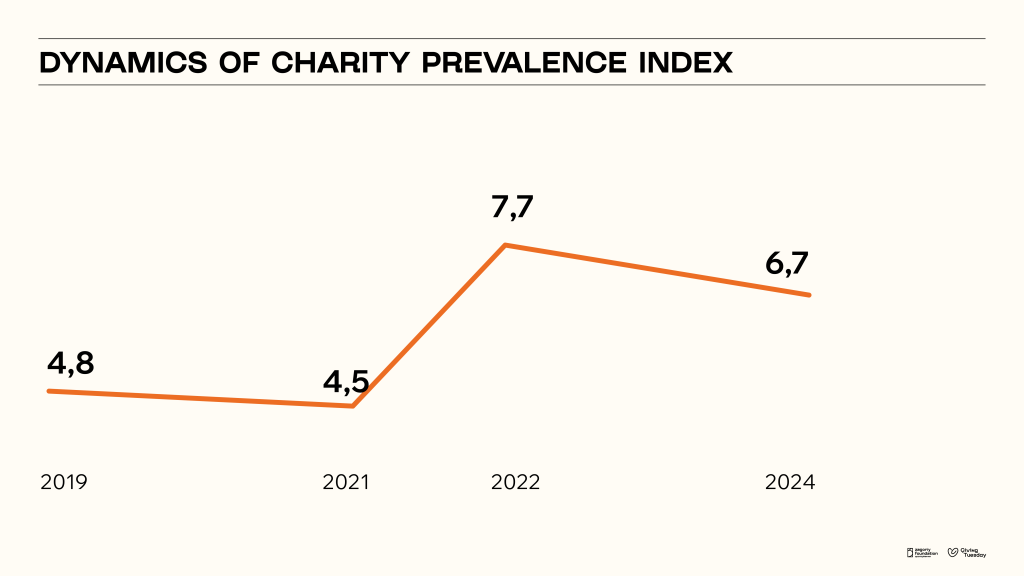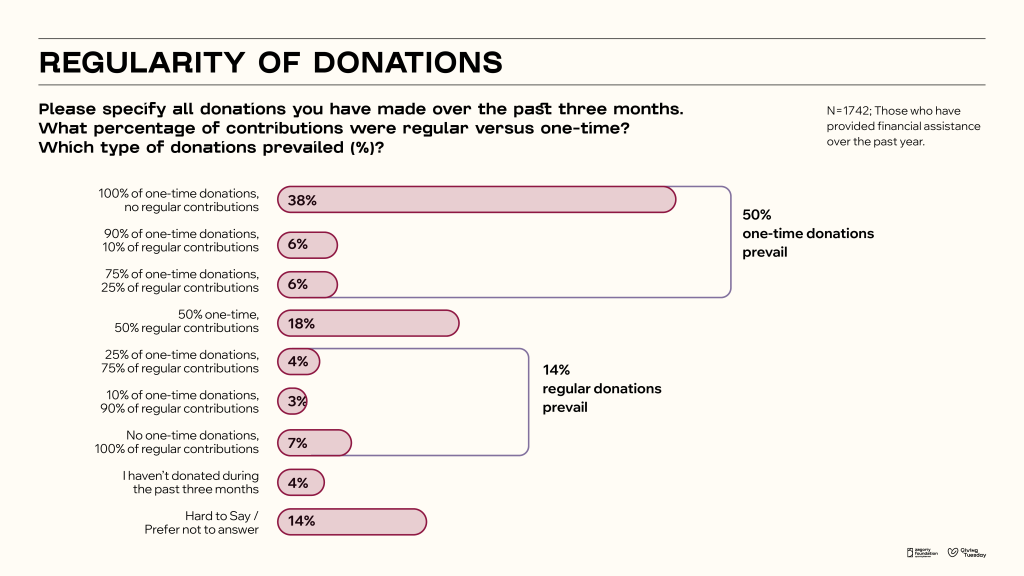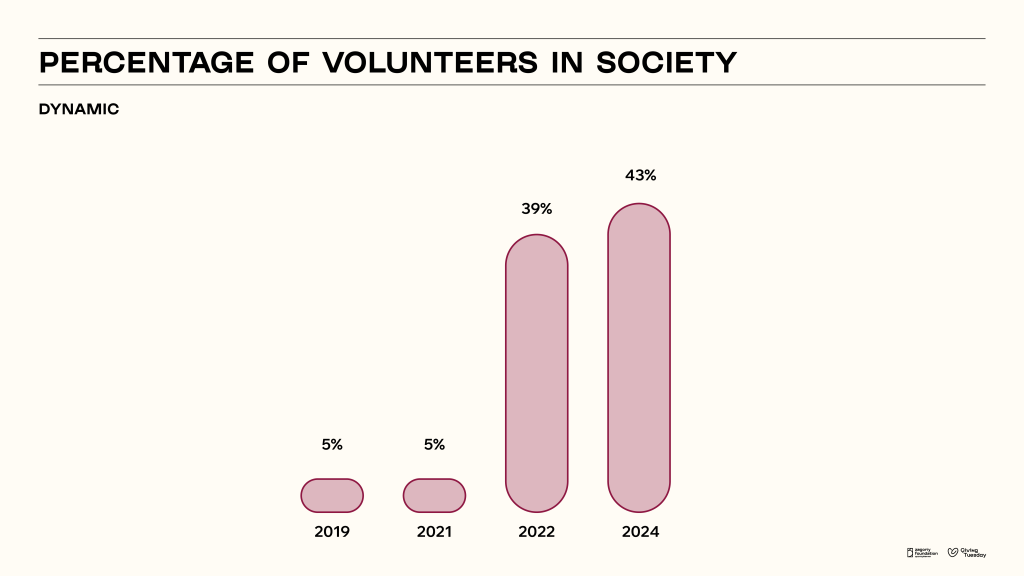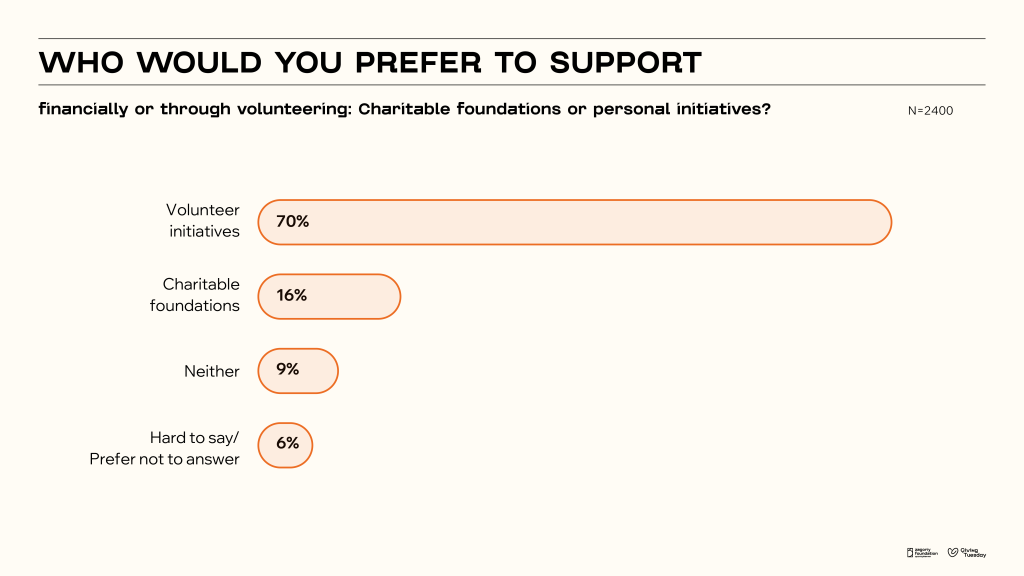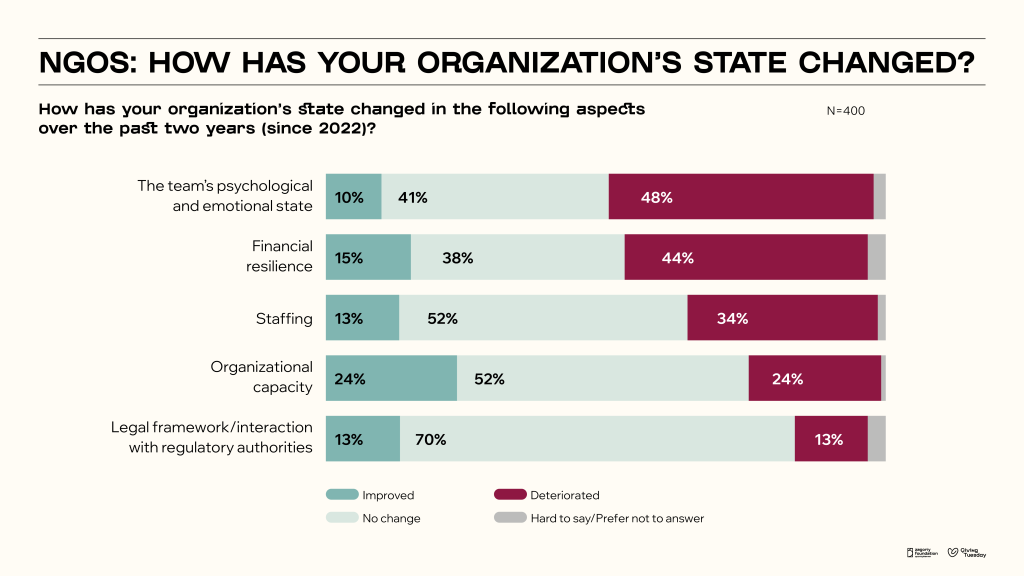Read 7 min
Survey of Charity in Ukraine 2024: Numbers, insights, and conclusions

The Zagoriy Foundation together with Info Sapiens carried out an annual survey of the Ukrainian charity sector to study charitable practices, their prevalence, trends, and challenges for civil society. With this goal in mind, we surveyed 2,400 Ukrainians aged 18+ and 400 representatives of non-governmental organizations (NGOs), while also conducting 20 in-depth interviews with public sector representatives.
The 2024 survey is a return to the original practice of a large-scale research that provides a comprehensive view of the sector. In previous years, the situation was changing too dynamically, often making the traditional annual survey in 2022 and 2023 break into operational stages. Now, it is time for the Zagoriy Foundation and Info Sapiens to “gather stones together.”
Why the survey is important
The survey allows seeing and comparing the perception of charity by those who provide assistance and those who receive it, as well as professional assessments of those working in the sector. Sometimes, their perceptions coincide — and sometimes they oppose diametrically. This contradiction and subjectivity of perception is characteristic of the sector. What important insights does the survey offer?
86% of Ukrainians are involved in charity
The share of Ukrainians involved in charity throughout the year remains high. However, the perception of its prevalence in society has changed: Ukrainians believe it to get less widespread than in the years before. However, the Charitable Giving Index decreased by only 1 point compared to 2022: from 7.7 to 6.7 on a 10-point scale. This is higher than in 2021, when the index accounted for 4.5.
Is donating a habit?
Monetary donations remain the most prevalent form of charitable giving. Compared to 2022, the share of such donations increased (from 76% to 85%), while the share of other forms of giving, i.e., donations of food, clothing, and medicine (53%) and volunteering (50%), fell.
On average, Ukrainians donate UAH 840 per month to charity. However, people who indicated their involvement in charitable activities donate more — an average of UAH 2907 per month.
In most cases, the average donation is made up of one-time giving. Only 14% of respondents prefer recurring donations (subscriptions) to one-time ones. Thus, while charity is becoming the norm, it is strongly influenced by situational decisions.
Philanthropists are mainly motivated by compassion, patriotism, and duty to society. Barriers to charitable giving include the lack of resources, health issues, and low awareness of in-kind support.
What is the Role of Volunteers in Charity?
Half of the Ukrainians who participated in charitable activities over the past year were involved in volunteering. This figure has increased from 39% in 2022 to 43% in 2024. The highest engagement in volunteering is seen among young people, rural communities, and public sector employees.
Volunteer movement becomes stronger and more institutionalized
Half of Ukrainians involved in charitable giving last year were volunteers. This figure increased from 39% in 2022 to 43% in 2024, with young people, rural residents, and public sector employees volunteering the most.
Volunteers are the backbone of nonprofit organizations. Organizations interact with them almost as much as with Ukrainian society and other organizations in the sector. This is particularly true for organizations supporting the Ukrainian Armed Forces or dealing with humanitarian aid: Of them, 67% and 70%, respectively, interact with volunteers on a regular basis.
Although not all organizations are able, willing, or need to engage volunteers, trust in volunteers gives agency to the movement, making it an influential force in the sector. According to the survey, 70% of those willing to support the public sector chose volunteer initiatives rather than charitable foundations. This underscores the tendency to donate as directly as possible, with as few intermediaries as possible between the donor and the person in need. In this regard, it is easier to build trust in a volunteer as a specific person rather than in an organization.
Are non-profit organizations effective?
At the current level, they are, but at the strategic level, they are rather not.
Organizations interact extensively and fruitfully with each other to share information and knowledge, develop professionally, create joint projects, and coordinate meetings and forums. The majority of respondents (62%) consider this cooperation and joint projects effective and note an increase in the efficiency of their work over the past few years.
Beneficiaries also tend to believe that these organizations work effectively, with 75% of them being satisfied with the assistance provided. Still, there is no consensus on strategic issues such as advocacy and anticipating beneficiary needs. About ⅔ of the organizations focus on the current needs of their beneficiaries, disregarding the future ones. This may relate to the lack of financial sustainability: 42% of charity and civic organizations’ representatives mentioned this challenge.
Interaction with business
In 2024, within the Giving Tuesday movement, we studied corporate social responsibility to gather the best practices and create a Guide to Caring. We also found that communication and interaction between the business and public sectors is complicated, with the annual Charity Survey noting changes in this area.
Currently, 54% of the organizations surveyed interact with business on a regular or occasional basis. The highest number of such contacts is found among the organizations supporting the Ukrainian Armed Forces (31%), providing humanitarian aid (30%), and dealing with education (21%).
Moreover, the vast majority of organizations (88%) consider their interaction with business to be effective, and 34% believe that its effectiveness increased in the two years since the start of the full-scale invasion.
Growth areas
The public sector in Ukraine has faced multifaceted complex challenges, from limited funding to emotional burnout of the team members.
The survey can highlight areas of potential growth for them, e.g., the need for a broad strategic cooperation within the sector to lobby for changes in the legal framework and the need for communication with donors and the media to synchronize their priorities with the actual needs of the sector. In addition, the study can point to the stakeholders in the sector with whom proper communication was lacking, including business and central government. There is a shift in this regard, though.
We hope the annual survey of the charitable sector will provide the needed answers and aid in decision-making.



